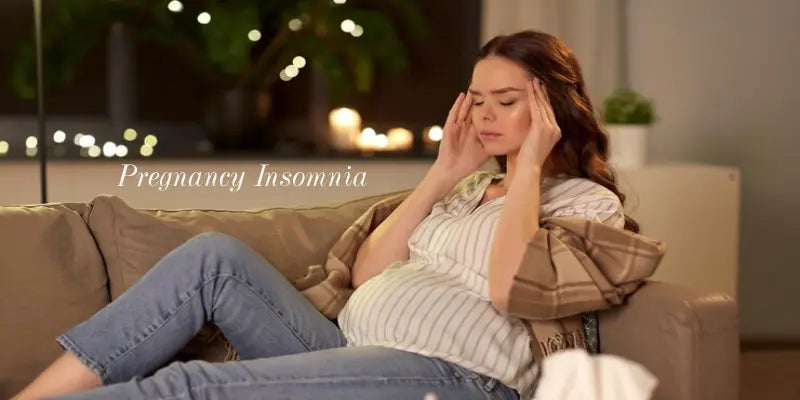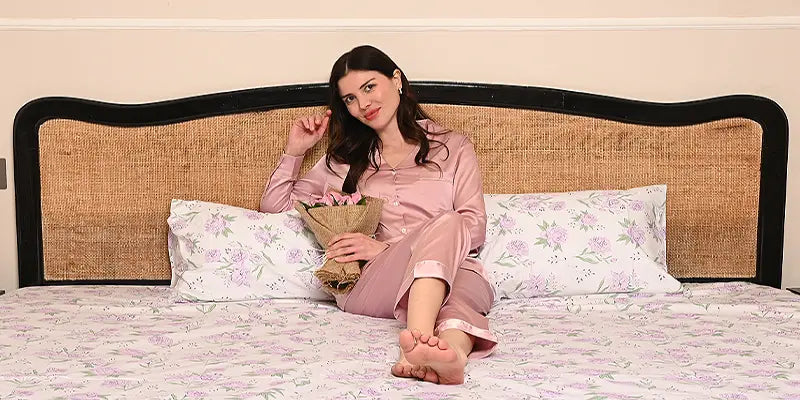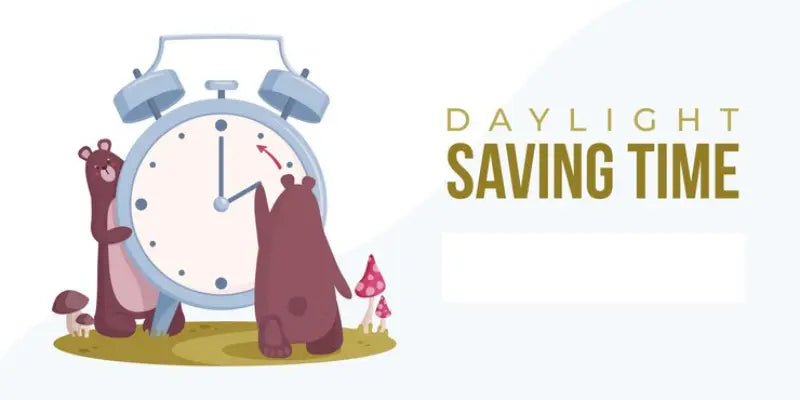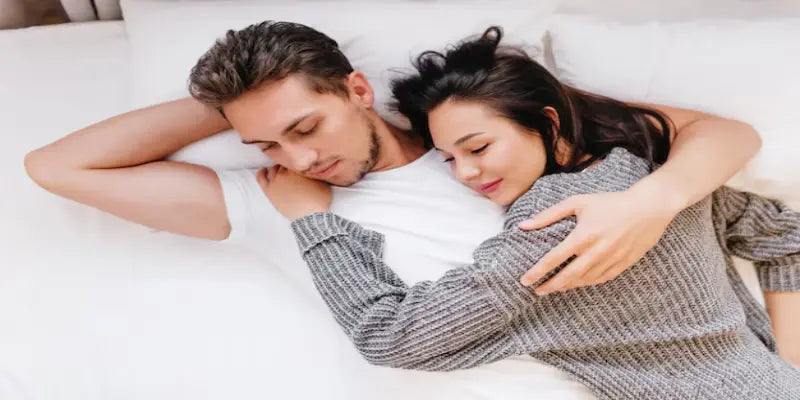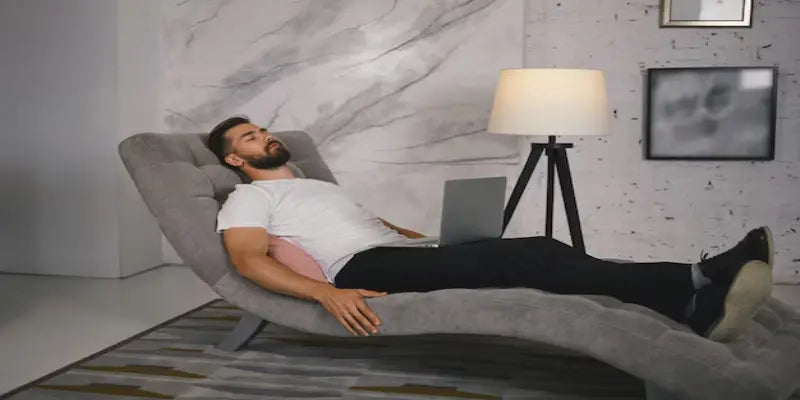
Sleepwalking (Somnambulism): Causes, Symptoms & Treatment
Sleepwalking is classified as a mental health issue. It sets the wheel in motion during heavy sleep and results in walking or any other kind of physical movement. This genetic disorder is mostly prevalent among small children, however, it is less common in adults.
This hereditary disorder is adversely impacted by nocturnal awakening. This paves the way for sleepless nights. People with sleep-related disorders are more prone to accidents and serious physical harm. Due to the sleepwalking disease, fatigue and excessive daytime sleepiness become long-time companions of sleepwalkers.
This guide describes everything about sleepwalking. It discusses the causes, symptoms, and effective treatments to administer this syndrome.
What is Sleepwalking Syndrome?
Medical practitioners tag this ailment as a Sleep Dysfunction. Under this syndrome, the patients unknowingly execute physical movements. However, with age, most individuals outgrow the condition.
Popularly known as Somnambulism, this sleep issue is categorized by experts as Parasomnia, which is a sleep disorder variant.
Though most sleepwalkers do not require serious treatment, severe sleepwalking requires medical assistance. With the right treatment, better sleep sessions and fewer sleepwalking incidents are guaranteed.
Sleepwalking Disease According to Age
This mental disorder generally kicks off during the early developmental stage of life, however, only 7% of people in the world experience it. As people come of age, this sleep walking disease becomes a thing of the past.
Only 1-1.5% of adults experience this parasomnia activity in the later years of their life.
Here is a brief overview of the sleepwalking disease according to age:
Infants and Toddlers (0–3 years)
Occurrence- Sleepwalking is not possible in this age group due to lack of motor skills and no fixed sleep patterns.
Children (4–12 years)
Occurrence- Around 5-15% of children in the world suffer from Somnambulism, predominantly between 4-8 years of age.
Teenage (13–18 years)
Occurrence- Usually, sleepwalking and other issues related to sleep fade away during teenage.
Adults (19–40 years)
Occurrence- Only 1-1.5% of adults experience this parasomnia activity in the later years of their life.
What are the Signs and Symptoms of Sleepwalking?
People experience unconscious locomotion due to sleepwalking. People with this mental health condition often walk or stand in a sleeping phase.
Here is the list of the other symptoms:
- Partial mobility. The sleepwalker advances without complete consciousness.
- Fixed sleepwalking time, usually within three hours of sleep.
- Bad synchronization of the body. Unsteady movements are common.
- No alertness about the surroundings.
- Fails to see with eyes opened.
Note: To elevate the sleep posture, use a body pillow that assists in minimizing locomotion during the incidents.
What Causes Sleep Walking?
As per sleep specialists, intense sleep curbs sleepwalking possibilities. This issue is only triggered when the person is in a partial arousal state.
Here is a list of the factors that trigger this parasomnia disorder:
- Sleepwalking is a hereditary condition. Hence family history is often the triggering point.
- Sleep insufficiency often enhances the chances of sleepwalking.
- Certain drugs and medicines with a calming agent interrupt the normal sleep cycle, elevating the chances of sleepwalking disorder.
- Intoxication interrupts the usual sleep cycle and elevates sleepwalking possibilities.
- Head trauma or neurological damage like swollen tissue often stands out as one of the primary drivers of sleepwalking.
- Temperature spike instances like fever, often lead to unwanted night awakenings among children.
- Sleep-disoriented breathing, where the airway gets clogged, leads to momentary breath disruptions during sleep. These breathing issues can arise frequently at night, triggering the walk during sleep disease.
- Often, the nocturnal disruption is triggered due to the Restless Leg Syndrome. This syndrome causes the legs to move while the body is at rest. This compels the body to witness a sleepwalking instance.
- Disturbed slumber is often the outcome of mental load, physical stress, or psychological burden. This elevates the discomfit level in the body, increasing the tendency for sleepwalking.
How to Fix Sleep Walking Disease?
No clinical care is needed to fix the sleep walking disease in children. With age progression, the instance of sleepwalking scales down on its own. For some intense cases, doctors keep a keen eye on the children till the episodes subdued.
For grown-ups, doctors try to diagnose what causes sleep walking. Sleep schedule, stress, or strong pharmaceutical compounds are the key factors for analysis. Based on these factors, doctors craft a targeted strategy for every sleep walking disorder patient.
Remove Safety Hazards
Sleepwalking threatens physical well-being and endangers the individual. By implementing simple moves and changes stated below, minimize the threats:
- Lock all the firearms and equipment.
- Put away the unsecured cords and additional items from the floor.
- Activate door alert systems.
- Put away any sharp equipment and items.
- Shut and lock doors and windows.
- Use motion-activated lights.
- Activate a bed alert system to sense motion.
Note: Use a body pillow to restrict unwanted movement and shifts during your sleep. It mitigates the possibility of sleep walking disease instances.
Address Root Causes
Obstructive sleep apnea (OSA) and restless legs syndrome (RLS) are the two conditions that contribute to sleepwalking. Managing these disorders usually resolves the episodes.
In some scenarios, doctors alter the medication level, in case the drug triggers the sleep walking disease. Doctors alter the previously issued prescription and fix the disorder by addressing the underlying cause.
Scheduled Awakening
Episodes of sleep walking disease adhere to a specific pattern, same time every night. To avert sleepwalking, doctors schedule awakenings to stimulate alertness before the standard occurrence time.
Inducing alertness in individuals prior to the episode time restricts the semi-conscious state that fuels sleepwalking. For children, this method works wonders to lessen the episodes, however, for adults, the impact is still uncertain.
Enhanced Sleep Practices
Sleep is undermined due to counterproductive habits. In this capacity, compromised sleep quality elevates the possibility of sleepwalking issues, leading to several sleep loss episodes.
To prevent such possibilities, steer clear of caffeine or alcohol prior to hitting the bed. Furthermore, follow a specific sleep pattern or night routine with the ideal mattress for your body shape to get a restorative sleep.
In addition, sleeping in a dark room in complete silence with a body pillow for proper comfort and aid is the key for deep sleep.
Note: Boost your sleep quality with enhanced sleep hygiene to minimize the causes of sleep walking issues.
What is the Treatment for Sleepwalking?
Age is a significant and noteworthy factor based on which medical practitioners conduct the treatment. They determine the frequency of the occurrence and the risk magnitude of each episode.
Here are the two most recommended treatments for sleepwalking:
Cognitive Behavioral Therapy
Unhealthy actions and attitudes adversely affect the sleep patterns of individuals. Cognitive Behavioral Therapy (CBT) alters such negative thought patterns and actions. CBT helps to reconstruct perceptions about sleep.
In addition to all the benefits, CBT also aids in minimizing distress and agitation which is one of the key triggers of the sleepwalking disorder. Using calming practices, CBT gradually mitigates stress-related issues like sleep walking disease over time.
Note: Medical practitioners play a pivotal role in implementing calming methods on stress-prone individuals.
Medication
When other treatment methods do not yield results, doctors advocate prescription drugs. Usually, doctors prescribe mood stabilizers or Benzodiazepines to minimize the sleep walking disease.
Some medical practitioners often recommend Melatonin to dial down the sleepwalking episodes.
It is crucial to note that certified medical practitioners determine the dosage level and monitor the side effects possibility. Every single sleepwalking case requires self-evaluation.
What are the Sleepwalking Risk Factors?
Several factors stimulate sleepwalking disorder among people. Here is an overview of the risk factors:
- Additional sleep-related conditions can elevate the risk. Obstructive sleep apnea hinders the sleep cycle and triggers the sleepwalking issue.
- Some psychological disorders like trauma, anxiety, etc. are all accountable for causing sleepwalking.
- Neurological disorders like Smith-Magenis syndrome and Parkinson’s disease fatigue the body most of the time. This leads to sleepwalking issues.
- Fatigued and exhausted individuals are likely to sleepwalk more often. Hence, sleep loss elevates the possibility of this medical condition.
- Sleep is disrupted when alcohol is consumed prior to hitting the bed. It impacts the brain and triggers the sleep walking disease.
- In rare scenarios, thyroid disorders such as Hyperthyroidism are often the reason for triggering the sleepwalking episodes.
- Certain environmental factors that impact the body like a full bladder, fever, or high-decibel noise increase the sleepwalking cases.
Note: While performing diagnosis, medical practitioners assess the risks. Once the exact reason is determined, the treatment begins.
Final Words
People are more susceptible to fatal injuries like a fall, trip, or collision due to sleepwalking. This disorder is more prone to injuries. Hence, it is recommended to guide the affected individual to settle back into bed.
Ensure, not to frighten the individual and awaken them cautiously if required. Sleepwalking victims are often very perplexed and are likely to be caught off guard for some time. Usually, these individuals forget such sleep-associated disorder episodes.
It is recommended to use a body pillow to prevent sharp edges from hitting the body and level up the comfort and security level. Comprehend what causes sleep walking and resolve the issues to handle sleepwalking.
FAQs
Q1: When does Sleepwalking end?
Ans: usually, children when they hit puberty, the sleepwalking episodes discontinue. For some children, such sleep-related disorders end with their teenageyears. Just 1 percent of people experience this mental disorder till adulthood.
Q2: What do Sleepwalkers notice in their sleep?
Ans: During sleepwalking, people often open their eyelids, appearing to be awake, however, there is no alertness. They fail to acknowledge their surroundings. Usually, individuals with sleepwalking disorder do not remember the sleep-induced episodes.
Q3: Can waking up a sleepwalker be fatal?
Ans: As per medical practitioners, walking people during sleepwalking is likely to make them disoriented for some minutes. Some respond with hostility while others react in a frightened manner. Hence, it is always suggested to wake them slowly and cautiously.


